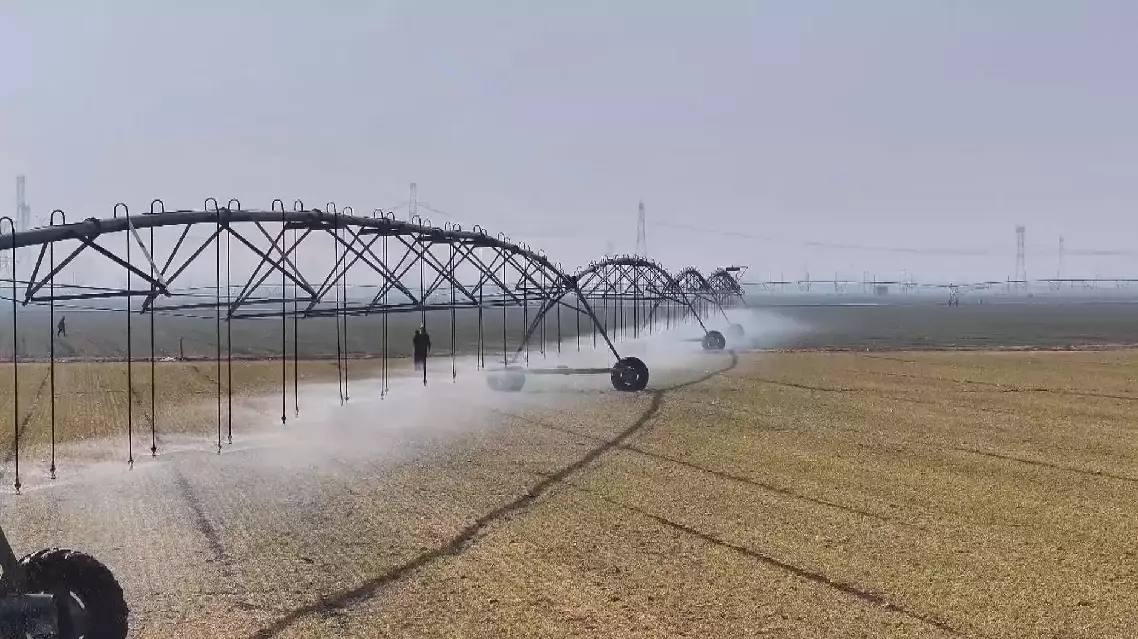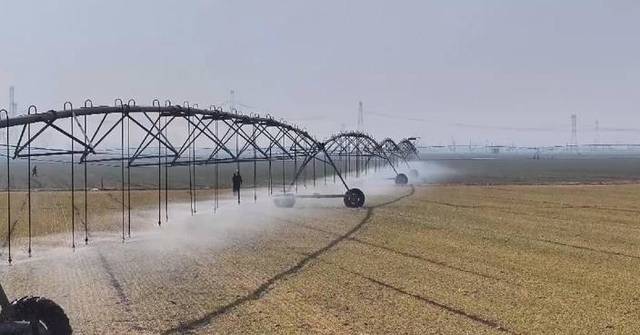Agricultural technology and digital control systems are empowering a smarter spring plowing that is now in full swing across China.
In Zhangjiagang City, east China’s Jiangsu Province, drones equipped with the Beidou navigation system are carrying out fertilization operations in wheat fields. They can save approximately 30 percent of fertilizer by using the precision variable spraying technology. Their intelligent flight control system can also automatically avoid obstacles and dynamically adjust parameters based on meteorological data, thus improving efficiency by 60 times compared with manual spraying.
“Our daily schedule is basically full. One drone can cover around 200 to 300 mu (about 13 to 20 hectares) of fields in one morning, and we can finish all the fertilizing work in around one or two weeks,” said Jiang Sufeng, a local farmer.
Jiaozuo City in Henan Province, central China, introduced a digital public service platform to monitor farmlands. Thanks to the cloud computing and drone remote control technologies, farmers can find out on their mobile phones the moisture and pest damage condition of every single piece of land.
“In the past, we relied on experience to check the fields and see if they were dry. But now, we can receive a text message on our phones reminding us when we need to water the crops. So it saves us both the time and labor, and we don’t have to worry about irrigation anymore,” said Wang Gang, a farmer in Jiaozuo’s Wenxian County.
Dongying City in east China’s Shandong Province is also using large-scale agricultural machinery to support spring farming. At a family farm in Guangrao County, a 500-meter-long pivot irrigation system that sprays water evenly is operating autonomously. Previously, irrigating one mu (about 0.07 hectare) of land required around 50 cubic meters of water, but the massive irrigation machine has reduced water usage to a little over 20 cubic meters.
“The traditional method was like flood irrigation, which consumed a lot of water. With manual spraying, one person could only water six or seven mu (about 0.4 to 0.5 hectares) per day. But this new irrigation system can manage 500 to 600 mu (about 33 to 40 hectares) of land in one day. I can control several machines at once without any trouble. It’s much easier,” said Li Shuguang, a farm owner.
Moreover, this multifunctional system can also assess soil moisture levels with AI-powered monitoring, while simultaneously tracking ground and air temperature, humidity, and pest conditions.

Agricultural technology empowers smarter spring plowing across China
A new wave of cold air is sweeping across north and east China over the past days, bringing heavy snowfall and drastic temperature drops of up to 20 degrees Celsius to multiple provinces including the provinces of Shandong and Hebei.
In Shandong, 10 cities and 49 county-level regions had been blanketed in snow as of 14:00 on Sunday.
The Shandong meteorological observatory renewed a yellow alert for icy roads and a blue alert for cold wave on Sunday.
China has a four-tier color-coded weather warning system, with red representing the most severe, followed by orange, yellow and blue.
Jinan, capital city of Shandong Province, has experienced a heavy snow and a temperature drop of more than 20 degrees Celsius within 24 hours.
The city’s traffic police has mobilized nearly 2,000 officers and more than 600 vehicles to ensure smooth traffic, and the urban management authorities have deployed more than 16,000 sanitation workers, over 800 sprinkler trucks, and over 400 snowplows to clear ice and snow from roads.
In Wudi County, Binzhou City of Shandong, the cumulative snowfall exceeded 10 millimeters on Sunday afternoon, with winds reaching Force 7 or higher.
The cold wave has slashed the temperature inside local greenhouses from above 30 degrees Celsius to around 10 degrees Celsius, threatening ripe vegetables like zucchinis and tomatoes as well as watermelon seedlings.
Local authorities have dispatched agricultural experts to instruct farmers on site to take targeted measures to avoid economic losses.
In Dingtao District, Heze City of Shandong, a heavy rain triggered waterlogging on some low-lying roads on Sunday, along with a temperature freefall to 0 degrees Celsius.
“The weather is like a roller coaster. The highest temperature in the past two days stood at over 20 degrees Celsius, and then it suddenly dropped since yesterday. I have put on my down jacket again,” said Jia Shu, a local resident.
Due to the cold wave, most areas in Hebei Province have been hit by blizzards since Saturday night, and the daily highest temperatures have returned to single-digit levels.
The provincial meteorological observatory issued a blue alert for strong winds on Sunday morning.
Amid the drastic drop of temperatures,locals have put on their winter clothes, and the extreme weather has also disrupted traffic.
“I feel very cold when I get out. The winds are strong, and it’s rainy. I could apparently feel the roads are slippery when driving,” said a local resident.

Cold wave hits north, east China, causing drastic temperature drops
link

